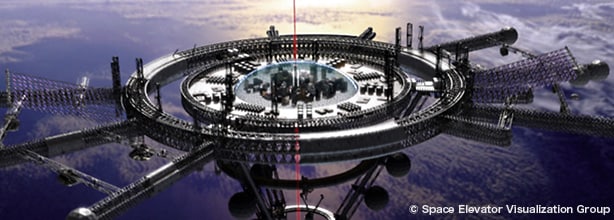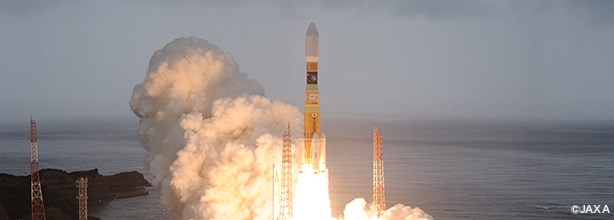
- Semiconductor Technology Now
Technology
Transporting goods to space efficiently without damaging the environment
At present, rockets are the only means available to transport goods and passengers into outer space, but they are not without problems. The biggest concern is their adverse effects on our planet’s environment. Solid fuel rockets emit chlorine gas, which could cause chemical reactions in the ozone layer and lead to ozone depletion. Rockets also consume enormous amounts of fuel in order to escape the Earth’s gravitational field, and the payload is just a few percent of the total weight of a rocket, so they are appallingly inefficient as transporters. In contrast, a space elevator is far more energy efficient because the kinetic energy of a descending climber can be recovered and used to assist its ascent. External power supply can also be used. “Launching rockets will be increasingly difficult as the amount of space debris increases,” says Yoshio Aoki, a professor of precision machinery engineering at Nihon University and a Space Elevator Study Committee member at the Japan Society for Aeronautical and Space Sciences. “Instead, perhaps we can use space elevators to bring satellites and other objects to a geostationary or higher orbit, and then release them into space. This way, we can put satellites in orbit without using big rockets at all.”
Since rocket launches are at the mercy of weather, space logistics using rockets can often suffer delays; whereas space elevators are less susceptible to weather conditions.
Building space elevators requires a universal change in the way we think
Space elevators can be a very promising alternative to rockets as a means of space transportation, but a lot of problems need to be cleared first before they can become a reality. First, there are technological problems. Carbon nanotubes certainly have the strength required of a space tether in theory, but the technology to manufacture a 100,000 km-long tether with that level of strength does not exist yet. Aoki expects the technology to be established by around 2030, and the first space elevator can be completed by 2050 or so if construction starts as soon as the technology is ready.
Second, there are issues concerning international politics. For instance, can a single country or private corporation own such a structure as a space elevator, considering its impact on the future development of humanity and the world economy? Perhaps such a large-scale building should be shared and operated by the entire mankind as our common property. Just putting a space tether in place is not the end of the story. A space elevator requires long-term maintenance and repair so the climber units can keep moving up and down the tether safely. Operating a space elevator ought to be a transnational project enabled by all countries working together. Unless all of us realize that we are members of a global community and start working toward eliminating international disputes, the next stage in the progress of mankind will never be reached. Construction of a space elevator will definitely be a step in the right direction.



















